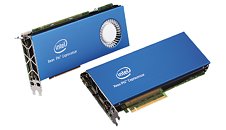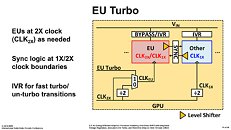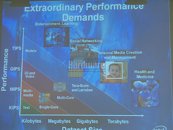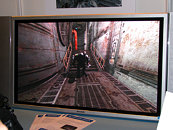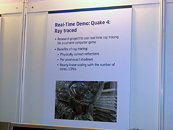
Pat Gelsinger Repeats Observation that NVIDIA CEO "Got Lucky" with AI Industry Boom
Pat Gelsinger has quite bravely stepped into the belly of the beast this week. The former Intel boss was an invited guest at NVIDIA's GTC 2025 conference; currently taking place in San Francisco, California. Technology news outlets have extracted key quotes from Gelsinger's musings during an in-person appearance on Acquired's "Live at GTC" video podcast. In the past, the ex-Team Blue chief held the belief that NVIDIA was "extraordinarily lucky" with a market leading position. Yesterday's panel discussion provided a repeat visit—where Gelsinger repeated his long-held opinion: "the CPU was the king of the hill, and I applaud Jensen for his tenacity in just saying, 'No, I am not trying to build one of those; I am trying to deliver against the workload starting in graphics. You know, it became this broader view. And then he got lucky with AI, and one time I was debating with him, he said: 'No, I got really lucky with AI workload because it just demanded that type of architecture.' That is where the center of application development is (right now)."
The American businessman and electrical engineer reckons that AI hardware costs are climbing to unreasonable levels: "today, if we think about the training workload, okay, but you have to give away something much more optimized for inferencing. You know a GPU is way too expensive; I argue it is 10,000 times too expensive to fully realize what we want to do with the deployment of inferencing for AI and then, of course, what's beyond that." Despite the "failure" of a much older Intel design, Gelsinger delved into some rose-tinted nostalgia: "I had a project that was well known in the industry called Larrabee and which was trying to bridge the programmability of the CPU with a throughput oriented architecture (of a GPU), and I think had Intel stay on that path, you know, the future could have been different...I give Jensen a lot of credit (as) he just stayed true to that throughput computing or accelerated (vision)." With the semi-recent cancelation of "Falcon Shores" chip design, Intel's AI GPU division is likely regrouping around their next-generation "Jaguar Shores" project—industry watchdogs reckon that this rack-scale platform will arrive in 2026.
The American businessman and electrical engineer reckons that AI hardware costs are climbing to unreasonable levels: "today, if we think about the training workload, okay, but you have to give away something much more optimized for inferencing. You know a GPU is way too expensive; I argue it is 10,000 times too expensive to fully realize what we want to do with the deployment of inferencing for AI and then, of course, what's beyond that." Despite the "failure" of a much older Intel design, Gelsinger delved into some rose-tinted nostalgia: "I had a project that was well known in the industry called Larrabee and which was trying to bridge the programmability of the CPU with a throughput oriented architecture (of a GPU), and I think had Intel stay on that path, you know, the future could have been different...I give Jensen a lot of credit (as) he just stayed true to that throughput computing or accelerated (vision)." With the semi-recent cancelation of "Falcon Shores" chip design, Intel's AI GPU division is likely regrouping around their next-generation "Jaguar Shores" project—industry watchdogs reckon that this rack-scale platform will arrive in 2026.









